- Qualcomm
- Nvidia
- AI
- Computing
- Ola Electric
- Tata Consultancy Services
- TechMahindra
- Automotive
- System-to-chip
- SoC
Qualcomm And Nvidia See Gain In Automotive Business
- By Bhushan Mhapralkar
- November 14, 2024
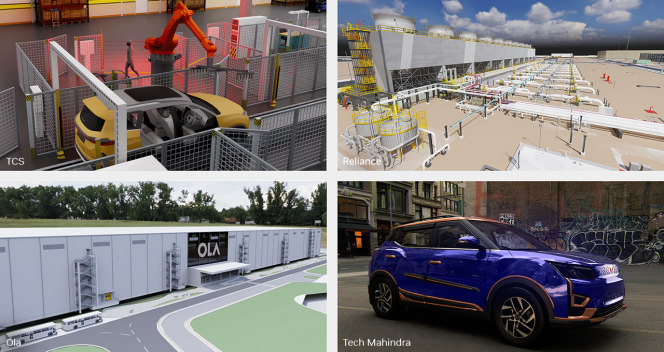
Introducing significant advancement in automotive semiconductor technology at the recent Snapdragon Summit 2024 with a focus on improving the cockpit and ADAS experience, Qualcomm has reported strong growth in its automotive revenue in the current calendar year.
The growth story at Nvidia – with a lucrative detour into AI – is indicative of the developments in autonomous vehicle technologies.
The tech major may not enjoy the popularity or acceptance that Qualcomm has come to command, the fact is, both are seeking an innovative approach to automobiles as their users seek new and exciting features.
While legacy automotive tier 1 suppliers like Schaeffler, Bosch and others facing the challenge of sluggish demand, the system-to-chip (SoC) technology companies like Qualcomm and Nvidia are engineering a different dimension to the art of automobile design, development and manufacture.
Enjoying an EBITDA margin of around 30 percent as compared to the five percent EBITDA margin roughly of tier 1 automotive suppliers, Qualcomm and Nvidia are driving the age of software defined vehicles that are already calling for engineers with a deeper understanding of software.
C++ or Autosar may be the language most automotive software programmes use as the basis, from a features or convenience point of view, even the presence of rain sensing wipers or an air-con that can be switched on or off with a voice command are fast gaining prominence among automotive buyers as they seek a different level of emotion connection with their set of wheels.
From a vehicle architecture point of view, please consider the Qualcomm’s Snapdragon Digital Chassis. It has evolved with the introduction of the Snapdragon Cockpit Elite and Snapdragon Ride Elite platforms on the hardware side.
Aiding faster computing speeds, both the platforms feature the Oryon CPU. This CPU has been optimised for automotive safety standards and designed for 3x faster CPU performance than previous generations, according to Qualcomm sources.
Aiding to enhance in-vehicle digital experiences by integrating advanced infotainment with autonomous driving capabilities on a single chip, developments like this mark an interesting milestone in the world of automobiles.
An important milestone will be the plan by Qualcomm to introduce lower-tier versions of these platforms to broaden their applications, enabling automakers to develop cost-effective solutions across various market segments.
The Cockpit Elite and Ride Elite SoCs are expected to be available to manufacturers starting in 2025, with early adopters such as Mercedes-Benz and Li Auto planning to integrate these technologies into their upcoming models.
The first vehicles using these platforms are expected to be available by 2026 in China. Releases in other markets in the world will soon follow.
Talking about Nvidia's lucrative detour into AI, Ola Electric has developed an Ola Digital Twin platform on NVIDIA Omniverse that is helping it to achieve 20 percent faster time-to-market – from design to commissioning for its manufacturing operations.
Built on NVIDIA Isaac Sim, the Ola Digital Twin platform taps into core Omniverse technologies like OpenUSD for data interoperability, RTX for physically-based rendering, and generative AI for accelerated world building to generate synthetic data or training autonomous mobile robots and robotic arms.
Consulting leaders such as Tata Consultancy Services (TCS) and Tech Mahindra are developing industrial AI applications and services on Omniverse to help manufacturers develop digital twins for accelerated factory planning, optimised processes, robotics training and large-scale automation, according to an industry source aware of the new developments in AI and industrial automation.
Edge AI and software virtualisation
At Snapdragon Summit 2024, Qualcomm emphasised the benefits of edge AI over traditional cloud-based solutions, particularly in terms of privacy and latency.
By processing data locally within the vehicle, edge AI enhances data security and ensures that sensitive information remains protected. Recent advancements in AI models, such as Llama 3.0, illustrate that edge AI can deliver strong performance while reducing memory requirements, which may lead to cost savings for manufacturers.
Interesting, use cases covering nearly every aspect of heavy manufacturing — from building virtual factories for real-time factory planning and monitoring, to creating digital twins of aircraft components for immersive training and predictive maintenance, Nvidia’s Omniverse is being used to simulate autonomous vehicles; to enable automotive companies to simulate and validate complex driving scenarios without the need for physical testing.
Image for representative purpose only
Ford And Renault Group Form A Strategic Partnership For Passenger And Commercial Vehicles
- By MT Bureau
- December 13, 2025
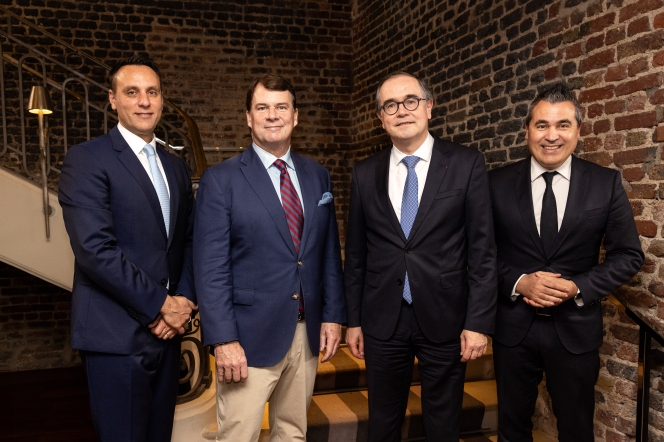
Ford and Renault Group have announced a landmark strategic partnership that will expand Ford’s electric vehicle offerings to European customers, significantly enhancing competitiveness for both automakers in a rapidly evolving European automotive landscape.
A cornerstone of the partnership is an agreement for the development of two distinct Ford-branded electric vehicles based on the Ampere platform, leveraging Renault Group’s strong EV assets and competitiveness. These two e-vehicles will be produced by Renault Group in the North of France, illustrating Ampere ‘ElectriCity’s’ modern manufacturing capabilities and expertise.
Designed by Ford, developed with Renault Group, the two cars will feature distinctive driving dynamics, authentic Ford-brand DNA and intuitive experiences. They mark the first step in a comprehensive new product offensive for Ford in Europe. The first of the two vehicles is expected in showrooms in early 2028.
In addition to collaborating on EVs, Ford and Renault Group have also signed a Letter of Intent (LOI) for a European light commercial vehicle collaboration. Under this LOI, the partners will explore the opportunity to jointly develop and manufacture Ford and Renault branded selected light commercial vehicles (LCVs).
François Provost, CEO Renault Group said: "Renault Group is proud to announce a new strategic cooperation with Ford, an iconic car manufacturer. This partnership shows the strength of our partnership know-how and competitiveness in Europe. In the long term, combining our strengths with Ford will make us more innovative and more responsive in a fast-changing European automotive market."
Jim Farley, president and CEO, Ford Motor Company said: "The strategic partnership with Renault Group marks an important step for Ford and supports our strategy to build a highly efficient and fit-for-the future business in Europe. We will combine Renault Group’s industrial scale and EV assets with Ford’s iconic design and driving dynamics to create vehicles that are fun, capable, and distinctly Ford in spirit."
Combining strengths
The companies will take advantage of the proven capabilities and competitiveness of Renault Group’s Ampere platform, EV manufacturing ecosystem and industrial capacities in the North of France (ElectriCity) to produce two all-new Ford-branded electric passenger vehicles.
By joining their expertise as major players in Europe, in innovation, design, software, and service delivery, Ford and Renault Group will aim to address industry challenges and better serve customers in both the retail and commercial vehicles segments.
The Ford and Renault Group strategic partnership will combine decades of experience in the light commercial vehicle segment, as well as the industrial scale and extensive supply base of both companies, creating a formidable force poised to drive innovation and efficiency in the European market.
- Gujarat Fluorochemicals
- World Bank Group
- International Finance Corporation
- GFCL EV
- Vivek Jain
- Dr. Bir Kapoor
- Imad N Fakhoury
Gujarat Fluorochemicals Secures $50 Million IFC Investment For Battery Materials Facility
- By MT Bureau
- December 05, 2025
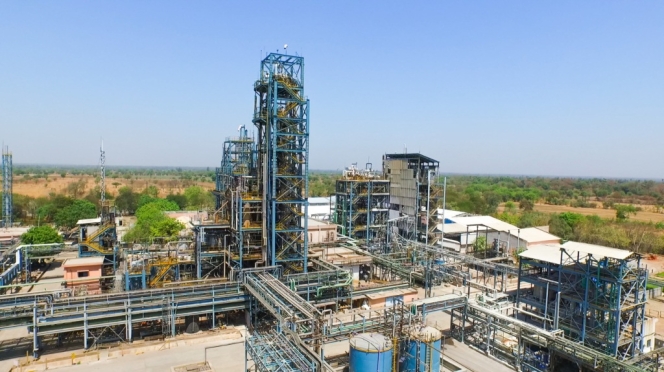
Gujarat Fluorochemicals (GFL), a fluorochemicals company, announced a partnership with the International Finance Corporation (IFC), a member of the World Bank Group. The IFC is investing approximately USD 50 million in GFL’s subsidiary, GFCL EV Products (GFCL EV), through the subscription of compulsorily convertible instruments.
The investment will be utilised towards what is claimed to be India’s first integrated battery materials facility. The project is intended to drive high-value manufacturing, create jobs, strengthen India’s position in global supply chains and advance national priorities of energy security, transport electrification and local value creation.
GFCL EV aims to reinforce India’s emergence as a competitive player in the global battery-materials value chain. The company has integrated manufacturing capabilities for battery chemicals with backward integration into key raw materials.
GFCL EV’s current product portfolio, catering to both electric vehicle and energy storage sectors, includes:
- Battery chemicals – electrolyte salt LiPF6, electrolyte formulations, additives for enhanced performance.
- Cathode active materials (LFP).
- Binders (both PVDF and PTFE).
Vivek Jain, Chairman, INOXGFL Group, said, “We are delighted to welcome IFC as a partner in GFCL EV. This milestone reinforces our vision for a greener future supported by IFC’s global expertise and commitment to sustainable development, aiding in accelerating India’s energy transition. IFC has a history of investing in sustainable businesses demonstrating long-term value creation. Their investment in GFCL EV is an endorsement of our differentiated model and growth trajectory. This partnership underlines our global leadership in battery materials and shall create long-term sustainable value for existing shareholders.”
Dr. Bir Kapoor, DMD and CEO, Gujarat Fluorochemicals, added, “This is IFC’s first investment in a battery materials company in India, marking a major milestone for India’s battery materials ecosystem. This capital raise enables us to scale up our manufacturing capacity for advanced battery materials strengthening India’s position in the global supply chain. GFCL EV stands among the few large-scale integrated battery materials manufacturers worldwide, with a portfolio that covers more than 50 percent of the LFP battery cell bill of materials”.
Imad N Fakhoury, IFC Regional Division Director for South Asia, said, “We are happy to partner with GFCL EV on this milestone initiative to advance value‑added manufacturing in India. As the country scales its electric vehicle and energy‑storage sectors, India has a clear opportunity to strengthen domestic capacity in key battery materials, set new benchmarks for high‑performance supply chains, and secure its place in the global market for advanced energy technologies. This investment forms part of IFC’s programmatic efforts to strengthen India’s e‑mobility value chain, and is enabled by a One WBG approach that builds the market and localizes global value chains, advancing the Make in India initiative. It will enable first‑of‑its‑kind greenfield battery manufacturing and build the capabilities India needs to play a larger role in high‑value components worldwide.”
VinFast Announces Expansion Of Tamil Nadu Facility For Electric Bus And Two-Wheelers
- By MT Bureau
- December 04, 2025
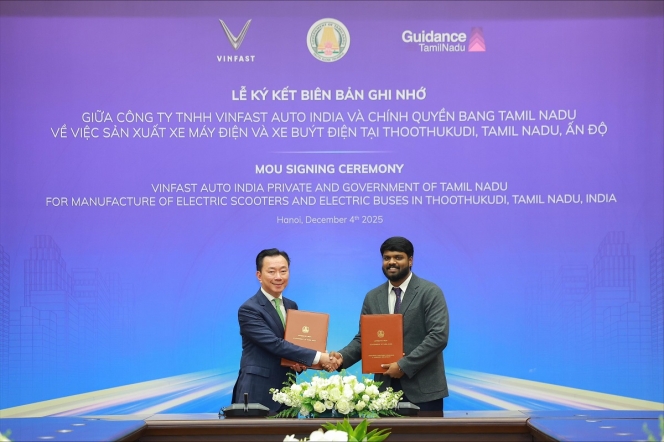
Vietnamese automotive company VinFast has signed a Memorandum of Understanding (MOU) with the Government of Tamil Nadu to expand its existing facility in the SIPCOT Industrial Park in Thoothukudi. The expansion targets the production of electric buses and e-scooters, alongside electric cars.
The Government of Tamil Nadu will allocate approximately 200 hectares (around 500 acres) of land adjacent to VinFast’s existing facility. The state will also provide support for securing permits and establishing infrastructure connections such as electricity, water and road access.
As the second phase of its existing USD 2 billion commitment, VinFast will invest USD 500 million in Thoothukudi to develop dedicated workshops and production lines for electric buses and e-scooters, covering manufacturing, assembly, testing and related operations. The Government of Tamil Nadu will apply all applicable incentives and financial support measures for this proposed investment.
The existing Thoothukudi facility covers 400 acres and has an initial annual capacity of 50,000 electric vehicles, which is being expanded to 150,000 units.
The initiative is expected to increase supply chain localisation, create additional employment opportunities and support workforce skill development in the region. Since entering the Indian market, VinFast has expanded its comprehensive EV ecosystem spanning manufacturing, distribution, charging infrastructure, aftersales services and battery recycling.
Pham Sanh Chau, Asia CEO, VinFast, said, “The proposed expansion of the Tamil Nadu plant will enable us to broaden our product lineup in India, from electric cars to electric buses and e-scooters, allowing us to meet a wider range of customer needs. We also expect this initiative to create new job opportunities, advance localization and strengthen the skills of the local workforce. VinFast believes that Tamil Nadu will continue to serve as a strategic hub in our global expansion journey and will play an important role in supporting India’s green mobility goals in the years ahead.”
Dr. T.R.B. Rajaa, Minister of Industries of the Government of Tamil Nadu, said, “We welcome VinFast’s next phase of planned development of the electric cars in Tamil Nadu and the new introduction of electric bus and e-scooters production will generate additional momentum for the green transportation strategy of both Tamil Nadu and India. The state government is committed to working closely with VinFast and ensuring favourable conditions throughout the implementation process to deliver lasting benefits for the community and the regional economy by ensuring that Vingroup thrives in Tamil Nadu and their flourishing ecosystem provides jobs for Tamil Nadu.”
Tsugami Inaugurates INR 3 Billion Assembly & Foundry Plant In Chennai
- By MT Bureau
- December 04, 2025
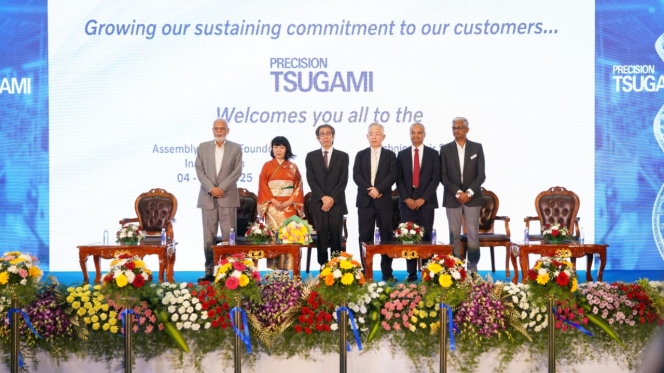
Japanese precision engineering machine tool company Tsugami has formally inaugurated its assembly and foundry infrastructure in Oragadam, on the outskirts of Chennai. The INR 3 b billion investment is claimed to be the largest ever by a Japanese machine tool maker in India, and the first foundry in India by a Japanese machine tool maker.
The Chennai facility is one of only three global facilities for Tsugami, the others being in Japan and China. The new 300,000 sqft facility, situated at SIPCOT Industrial park Oragadam, will generate over 1,000 jobs, employing 700 professionals directly and 300 indirectly.
The newly inaugurated infrastructure enhances the volume production of high-performance machine tools in India. It has an annual capacity of 3,000 machines, while the foundry has an installed annual capacity of 6,000 tonnes.
The new infrastructure enables increased indigenous production of Tsugami machine tools. The facilities enhance the scale of production while maintaining quality standards.
The inauguration was attended by Arun Roy, IAS, Secretary – Industries, Govt. of Tamil Nadu and Kaoru Shiraishi, Director General, JETRO.
Kaoru Shiraishi, said, “Today’s inauguration is yet another excellent example of the long-standing relationship built on trust, innovation, and mutual respect between Japan and India. There is immense value creation possible when one combines Japanese technology and quality with India’s talent, energy and growing market strength. This new facility represents a deep commitment to contributing to India’s development, creating local employment and strengthening industrial capabilities. Am confident that this facility will become a model of excellence and a symbol of our enduring partnership. JETRO remains committed to supporting Japanese companies in India and to fostering an environment where collaboration and innovation can thrive.”
Arun Roy, said, “For several decades, Japan has been one of Tamil Nadu’s most trusted partners in economic development, cooperation and advanced manufacturing. Japanese companies have consistently shown confidence in TN’s talent, infrastructure, and business-friendly environment. Today’s inauguration is a major reaffirmation of that partnership & confidence. This new facility reflects the values that define Japanese industry – precision, discipline, innovation and an unwavering commitment to excellence. Am delighted that this facility will generate significant employment for our youth who are known globally for their technical skills and dedication. Am confident that the collaboration between Japanese expertise and local talent will set new benchmarks & create new opportunities for local suppliers in Tamil Nadu.”
K Balasubramanian, Founder, Tsugami India and Chairman & MD, Proteck Machinery India, said, “The new facility is a big step-up for India’s high-precision manufacturing ecosystem as Tsugami is globally respected as among the pioneering players in the precision engineering space known for their innovation and unwavering commitment to excellence. This facility is surely going to lead to a snowballing effect on India’s ability to support manufacturing of components and products that need precision engineering, a much needed capability. Availability of human resources with superior competence in industrial manufacturing is one of the significant factors that compelled us to choose Chennai and Tamil Nadu for this new facility. It’s a truly proud moment for each of us at Tsugami India today and we are truly indebted to the Tsugami Corporation board and management for their unwavering commitment to India and Tamil Nadu.”





Comments (0)
ADD COMMENT